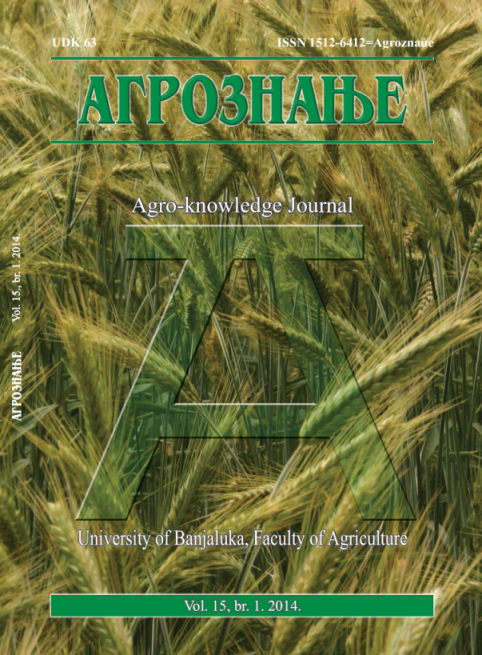Susceptibility of Some Walnut Cultivars to Gnomonia leptostyla and Xanthomonas arboricola pv. juglandis in Bulgaria
DOI:
https://doi.org/10.7251/AGREN1401041AAbstract
The aim of the present research was to study and compare the susceptibility of 13 walnut cultivars – 5 Bulgarian (B), 3 French (F), 2 Hungarian (H), and 3 American (A) – to Gnomonia leptostyla (Fr.) and Xanthomonas arboricola pv. juglandis (Pierce) Dye, the pathogens causing leaf spot and walnut blight. The study was conducted under natural environmental conditions in a 5-8-year-old walnut collection orchard of the Fruit Growing Institute – Plovdiv, during the period 2006-2010. The evaluation of the attack produced by these pathogens was carried out on different organs leaves and nuts in two periods of the year (June and October). All the studied cultivars were distributed in 6 different levels of susceptibility to a given pathogen based on the degree of attack. The article presents data on the sensitivity of the studied walnut cultivars to the attack to G. leptostyla (Fr.) and X. arboricola pv. juglandis (Pierce) Dye and discusses the results obtained.

